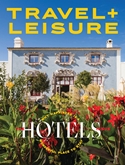The closest airport is Jerez de la Frontera, approx 30 minutes by car or taxi (fixed price €46), 1 hour by direct bus. There are several daily flights to Madrid and Barcelona (Iberia, Spanair, Vueling). Ryanair fly daily to London Stansted and Frankfurt Hahn. Other operators fly scheduled, charter, or seasonal flights. The nearest major airports are in Sevilla (hour by car, 2 hours by bus or train) and Malaga (2-3 hours by car or bus).
Buses run to and from Seville, Jerez, Algeciras, etc. A ticket from Jerez to Cadiz is about 10 euro. For Jerez-Cádiz timetables see Consorcio de Transportes Bahia de Cadiz.
Frequent trains run to Jerez and about hourly to Seville. A very convenient way to come in from Madrid is with the Talgo train that runs twice a days covering the distance in about 5 hours. See RENFE for timetables.
From Madrid, Cordoba and Seville you can use the A4, from Barcelona N340. A taxi ride from Jerez de la Frontera to Cadiz costs about 50 euros.
A modern monument of Cadiz are the huge pylons of the powerline crossing the bay of Cadiz. These 150 metre high pylons are lattice towers with cylindrical cross section.
Everyone should visit the Cathedral in the old town and climb to the top of the cupula for a nice view of the entire city.
The Torre Tavira, near the Central Market (Mercado de Abastos) is a 19th century camara oscura in perfect working order. Located in one of the towers originally used by merchants to watch out for their ships returning home from the Americas, it provides a birds-eye view of the old part of town.
Get to Cadiz for Carnaval, usually in February, one of the oldest and best in Spain.
Semana Santa (Easter or Holy Week) is less formal than in Sevilla, and probably more authentic and emotive an experience for that.
Enjoy the best sunset in Spain on 'la playa caleta' on the southern end of old Cadiz. The main beaches (Santa Maria Del Mar, Victoria, and Cortadura) start at the edge of the old town, continue all along the edge of the new town, and on alongside the road to San Fernando. In total some 10 km of the widest, cleanest beaches you will find in Europe, with safe bathing from around May to October. The summer heat is usually tempered by an Atlantic breeze, although on days when the Levante blows beware of flying sand.
In Cadiz you will find some of the best and freshest fish and shellfish in the world. They are best eaten as simply cooked as possible: plain boiled shellfish (in varying sizes from tiny prawns up to lobsters), grilled or baked whole fish such as lubina (bass) or dorada (bream), or deep fried with a light flour coating (especially puntillitas (baby squid) and boquerones (anchovies).
Fino, a bone dry sherry (or Jerez), or manzanilla, a similar wine from Sanlucar de Barrameda, is the perfect aperitif with olives or a prawn or two. Drinking more than a couple of glasses may spoil your focus on the rest of the meal. The best local white wine (and one of the most popular in Spain) is Barbadillo, made from the same grape but considerably lighter.
Casa Caracol - Inexpensive and quite relaxed hostel on the old part of Cádiz. Visit www.caracolcasa.com for prices and reservations.
Hostal La Cantarera is an excellent hostel for what it costs, with clean, luxurious rooms and friendly management, located in the old town.
Subscribe to:
Post Comments (Atom)

No comments:
Post a Comment